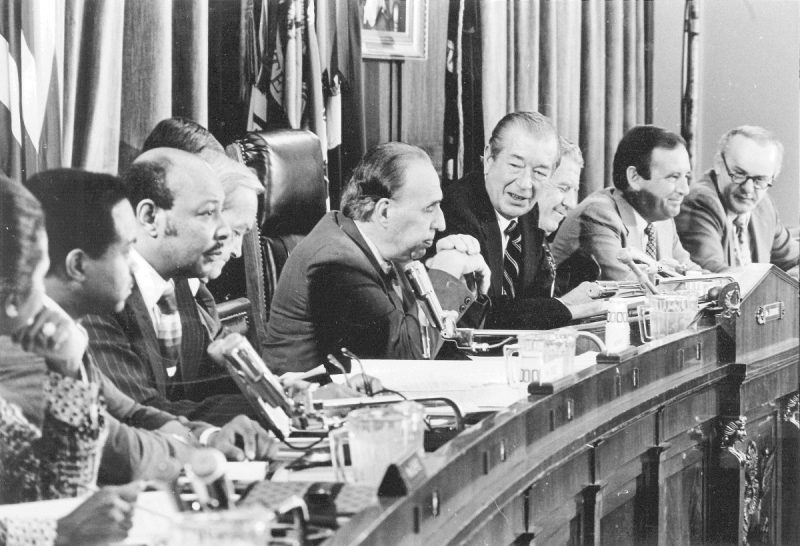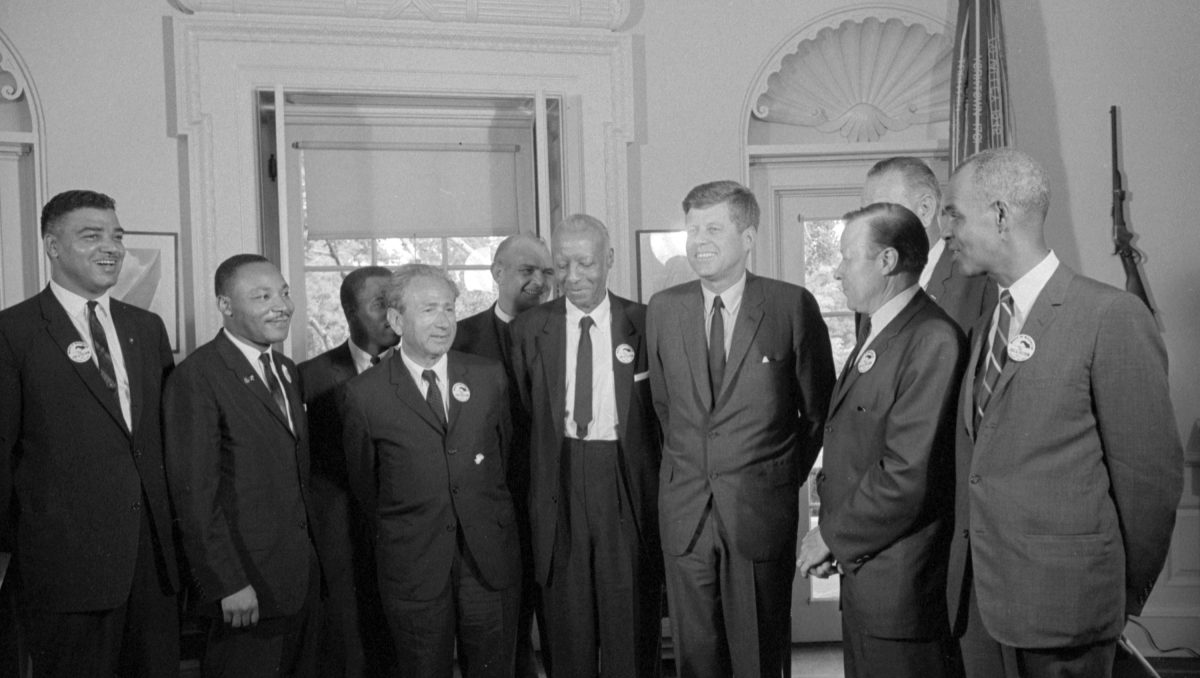It was, to put it mildly, ambitious.
One document would attempt to assuage public doubts about two of the most famous murders in American history: The assassination of President John F. Kennedy and the sniper shooting of Nobel Peace Prize winner Dr. Martin Luther King, Jr. Two killings that—while understandably linked in the public mind as assassinations that occurred during the 1960s—are otherwise very separate events.
After all, they occurred over four years apart, in different cities located in different states that are separated by 450 miles. The two men certainly had connections but weren’t particularly close; the Christian Science Monitor dubbed them “wary allies.”
Did the House Select Committee on Assassinations succeed? If its goal was to put questions about these matters to rest, the answer is, “Oh, hell no.” Yet it remains a fascinating attempt to reassure the public that the government is willing to recognize and address a potential shortcoming. This is how the House Select Committee on Assassinations came into existence and why it utterly failed to quell those concerns.
At First, There Was Faith
Initially, much of the public went along with the Warren Commission (named after chair Earl Warren) and their declaration that they “found no evidence that either Lee Harvey Oswald or Jack Ruby was part of any conspiracy, domestic or foreign, to assassinate President Kennedy.”
The History Channel reports that, after the Warren Commission Report was released in 1964, a survey revealed 87 percent of the American public believed Oswald acted alone in killing JFK. That conjecture, however, didn’t last—by 1976, 81 percent gravitated towards conspiracy.
The History Channel credits a flood of critical works for the shift, notably Mark Lane’s Rush to Judgement and New Orleans D.A. Jim Garrison’s public campaigning in general. (Garrison wound up being portrayed by Kevin Costner in Oliver Stone’s 1991 drama, JFK. In a nicely ironic bit of casting, Garrison appeared in the movie as Earl Warren.)
The year 1975 was particularly significant in shifting public sentiment. That year finally saw the release of the full Zapruder film, including the moment Kennedy is shot, when Geraldo Rivera aired it on Good Night America.
Doubts also lingered over the 1968 killing of King. In particular, James Earl Ray confessing but taking back his confession just days later fueled a sense that the story was incomplete. It didn’t help that Ray’s guilty plea still held even as his recollection changed—it prevented there from being a trial, much as Oswald’s death prevented one from happening for the murder of President Kennedy.
Readdressing the Record
The House Select Committee on Assassinations came to be in 1976. The New York Times reported that the “committee was formed after a subcommittee of the Senate Select Committee on Intelligence reported earlier this year that it had discovered evidence that raised serious questions about whether the commission, headed by the late Chief Justice Earl Warren, that investigated Mr. Kennedy’s death received full and complete information from the Federal Bureau of Investigation or the Central Intelligence Agency.”
The most notorious omissions include CIA agent George Joannides. He was the case officer for a student group determined to get rid of Fidel Castro. Lee Harvey Oswald was caught publicly clashing with this group on behalf of Castro supporters… despite the fact that he had earlier offered his services to the Castro critics.
Was the CIA using Oswald to infiltrate Castro’s backers? Or, at minimum, was Oswald someone they were monitoring ahead of JFK’s assassination? The CIA did their best to minimize suspicions in the short term—and maximize them for future conspiracy theorists—by neglecting to reveal any of this to the Warren Commission, even though Allen Dulles was a Warren Commission member. (Dulles had been the CIA director until 1961.)
The FBI’s record proved similarly troubling. Warren Commission member (and Louisiana congressman) Hale Boggs later declared, “Hoover lied his eyes out to the commission—on Oswald, on Ruby, on their friends, the bullets, the gun, you name it.”
The FBI was also intensely hostile to King throughout his life. We are still learning about the tactics FBI Director J. Edgar Hoover used against the civil rights leader. Beyond wiretaps and bugs to surveil King both at home and on the road, occasionally they introduced measures intended to stop him outright. These include allegedly sending an anonymous letter complete with a tape recording that accused King of being a “dissolute, abnormal moral imbecile.” (It was suggested the recording documented a sexual indiscretion.) The message seemed to suggest he should commit suicide: “There is but one way out.”
This is to say that, even if the FBI and the CIA weren’t directly involved in either killing, their actions raised a lot of questions that seemed to demand answers.
Those were not to come.
New Investigation, Similar Issues
The House Select Committee on Assassinations consisted of two subcommittees: One on the assassination of Martin Luther King (headed by Chairman Walter E. Fauntroy from the District of Columbia) and one on John F. Kennedy (headed by Richardson Preyer, North Carolina).
The overall head of the committee was Thomas N. Downing. At least, he was initially, only to step down when he retired from Congress in 1977. Henry B. Gonzalez then became the chair, only to resign after getting in a dispute with another member. Louis Stokes ultimately became the third and final chair.

While musical chairpeople was a low point, the real nadir only became visible years later. As noted, a driving reason for this body’s formation was a belief the CIA had not been frank with the Warren Commission. Making it downright surreal that the the CIA named George Joannides—yes, that George Joannides—as its contact with the House Select Committee on Assassinations.
Joannides proved no more forthcoming that he’d been back in the ’60s.
Despite all this, the Committee moved ahead and released its report on March 29, 1979.
New Conclusions Bring More Confusion
In 1964, the Warren Commission concluded that Lee Harvey Oswald had acted alone in assassinating JFK. In 1969, James Earl Ray was sentenced to 99 years for killing MLK. The House Select Committee on Assassinations suggested that there was more to both stories. Unfortunately, they didn’t really unearth exactly what that was. Among their conclusions:
# Oswald “probably” didn’t act alone: “The Committee believes, on the basis of the evidence available to it, that President John F. Kennedy was probably assassinated as a result of a conspiracy.” (They did not offer specifics: “The Committee is unable to identify the other gunman or the extent of the conspiracy.”)
# They excluded government involvement in this conspiracy: “The Secret Service, Federal Bureau of Investigation, and Central Intelligence Agency were not involved in the assassination of President Kennedy.”
# But they also found the government had hardly covered itself in glory: “Agencies and departments of the U.S. Government performed their duties with varying degrees of competency in the fulfillment of their duties.” (In particular, the Secret Service was cited as “deficient.”)
The King assessment was oddly similar to the JFK assertions:
# Once more, they concluded it was likely the work of more than a single gunman: “The Committee believes, on the basis of the circumstantial evidence available to it, that there is a likelihood that James Earl Ray assassinated Dr. Martin Luther King, Jr., as a result of a conspiracy.”
# Again, the government was kept out of it: “No Federal, State or local government agency was involved in the assassination of Dr. King.” (They did note that the “Department of Justice and Federal Bureau of Investigation performed with varying degrees of competency and legality in the fulfillment of their duties.”)
The end result seemed designed to irritate as many people as possible. Those genuinely convinced that Oswald and Ray had acted alone saw their belief under attack. And those who felt there was more to the story were left frustrated by the inconclusiveness of the conclusions.
Where We Are Today
The House Select Committee on Assassinations was almost certainly doomed to fail. Why? Because it’s hard to make the public feel like they’re getting the complete truth when thousands and thousands of documents remain classified. Indeed, 2018 saw the Trump administration delay the release of some materials linked to the JFK assassination—they aren’t scheduled for release until October 26, 2021, nearly 58 years after his death. (The National Archives did release 2,800 of them in 2017 and another 19,045 in 2018. Others have apparently gone missing or been destroyed.)
The result is that we’re getting more and more of the picture… but getting it after the actual participants are long dead. George Joannides, for instance, died in 1990.
For that matter, so are people who did the investigating. All three Select Committee chairmen are dead. So is Earl Warren. Even the man who played Warren in Oliver Stone’s film has permanently left the set. (Jim Garrison died in 1992.)
It’s safe to say that—if Oswald did have help—those conspirators died long ago. Meaning even if we find the full truth, we still won’t ever be able to confirm it in a satisfying way.
And there may be even more uncertainty surrounding MLK’s death than JFK’s.
The Riddle of Ray
Most Americans have at least some knowledge of the JFK assassination. We also know that Oswald was quickly apprehended and swiftly murdered by Jack Ruby, who died himself in 1967. The result is that—while there are many questions—there is also some closure.
People tend to be less knowledgeable about King’s death and Ray in particular. For instance, they may have forgotten what a strange struggle it was to bring him to justice. The PBS series American Experience devoted an episode to King’s murder. They note that the manhunt for Ray “would last more than two months and span five countries.” Ray was finally busted at London’s Heathrow Airport, attempting to fly to Brussels. He had already flown through London once on a failed attempt to relocate to the white-run African nation of Rhodesia, which is now Zimbabwe.
Ray was even on the run before the murder: He had escaped from prison, where he was serving time for a series of robberies. Ray also escaped prison in 1977 for about 54 hours—he and six other prisoners used a makeshift ladder. (Ray ultimately died in prison in 1998.)
Ray confessed but days later insisted he had only purchased a gun and binoculars and rented a room across from King’s motel, which he had done at the direction of a man he knew as “Raoul.” King’s own family came to believe Ray did not commit the crime, highlighting this belief in a 2018 Washington Post article. King’s youngest child, Bernice, declared, “It pains my heart that James Earl Ray had to spend his life in prison paying for things he didn’t do.”
The fact remains, however, that there is a great deal of evidence against James Earl Ray, just as there is a great deal of evidence against Lee Harvey Oswald. And while we have learned a great deal of information suggesting others might have been involved, we still can’t definitively implicate anyone else specific with either killing yet.
Meaning all these decades later, we still face the possibility that America was robbed of two of our most iconic leaders by a pair of troubled men acting alone. An assistant district attorney named John Campbell once articulated why this is so unsatisfying: ”You just don’t think that these powerful people, these people who are larger than life, can be killed by some nobody with a gun. You know, there has to be more involved.
“Well, sometimes there’s not more involved.”
And so we wait, hoping against hope the next batch of declassified documents will at last provide the certainty we so desperately desire.
This article was featured in the InsideHook newsletter. Sign up now.
























